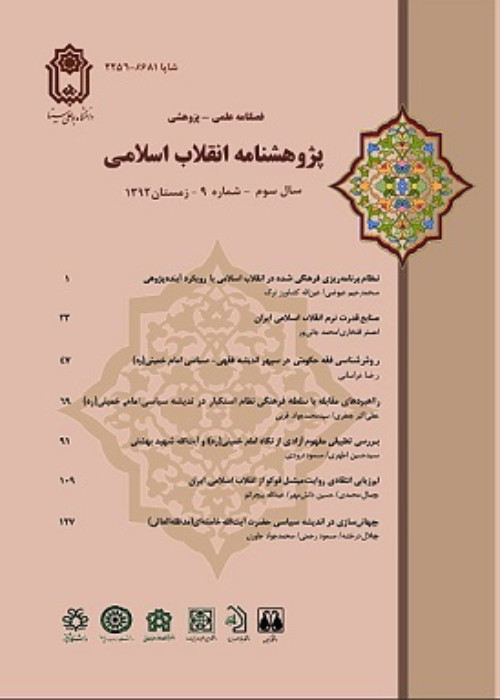Analysis of Iran's geopolitical codes in the developments in the Middle East and its impact on the future of the Islamic Revolution
The Middle East is a regional anarchy system that often works according to the realistic rules of power politics. The inherent nature of this regional system has brought about changes in the behavior of actors, on the security and the interests of other members of the Middle East region. In the regional rivalry of Iran and rival regional players, especially in Saudi Arabia, one can see the effects of ideological and geopolitical rivalry. The activation of the allies and the support of the groups is another part of the signs of rivalry between Iran and these Saudi-dominated regional who have been ousted by the glorious Islamic Revolution of Iran in 1357. Several regional issues have led to the emergence of a convergence of views between Iran and regional rivals in the Middle East, and has made it difficult to achieve stability and understanding in interrelations. The present paper seeks to answer the question of how regional geopolitical codes on the one hand affect political behavior and rivalry with regional rivals in the Middle East. On the other hand, how does this effect affect the future of the Islamic Revolution of Iran? Does it leave? The hypothesis of the research is that the choice of geopolitical code by the region of the Islamic Republic of Iran, the competition with the countries supporting the terrorism and affiliated with the West in the region (including Saudi Arabia, Qatar, UAE and Turkey) in the field of identity issues, Security and national interests. Based on this, Iran has defined the geopolitical codes as well as the definition of its friends and enemies, how to protect them, and at the same time defending their own interests and confronting threats, and justifying these actions and responses to threats. There are a number of uncertainties that threaten the Islamic Revolution of Iran, and from this perspective, it is important to examine the codes that are in crisis, and then their impact on the future of the Islamic Revolution. The method of this research is descriptive-analytic. The research data are collected in a library and through a picturing tool.
- حق عضویت دریافتی صرف حمایت از نشریات عضو و نگهداری، تکمیل و توسعه مگیران میشود.
- پرداخت حق اشتراک و دانلود مقالات اجازه بازنشر آن در سایر رسانههای چاپی و دیجیتال را به کاربر نمیدهد.



